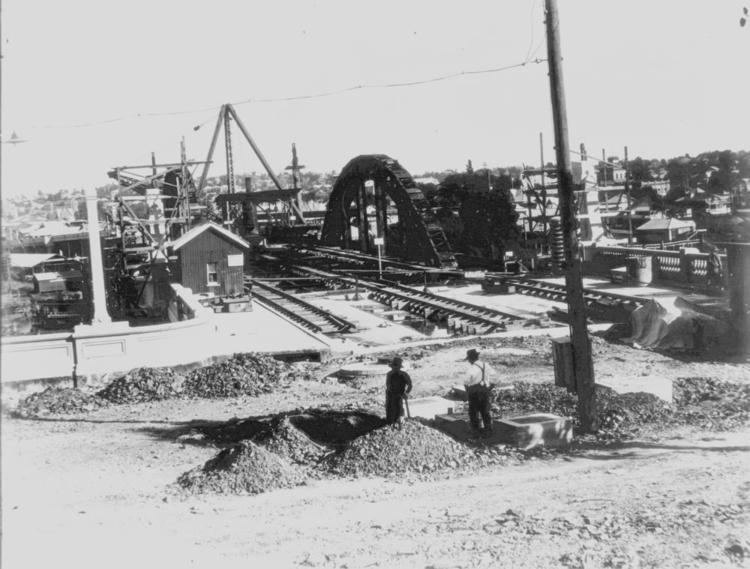Crosses Brisbane River Opened 30 March 1932 Location Brisbane Body of water Brisbane River | Official name William Jolly Bridge Total length 500 m Bridge type Arch bridge | |
 | ||
Carries 4 lanes of vehicular traffic, two pedestrian paths Locale Brisbane, Queensland, Australia Design Steel frame arch bridge Longest span Three main arches of 72m each Address Brisbane City QLD 4000, Australia Similar Brisbane River, Victoria Bridge - Brisbane, Merivale Bridge, Kurilpa Bridge, Bridges over the Brisbane | ||
Gutter gods william jolly bridge footage
The William Jolly Bridge is a heritage-listed vehicular and pedestrian bridge over the Brisbane River in Brisbane, Queensland, Australia. It is a steel frame arch bridge with an unusual concrete veneer and was opened to traffic on 30 March 1932 by Sir John Goodwin, the Governor of Queensland.
Contents
- Gutter gods william jolly bridge footage
- Ripped off william jolly bridge
- History
- Design
- Traffic use
- Congestion
- Heritage listing
- References
When opened, during the worst year of the Great Depression, the bridge was known simply as the Grey Street Bridge. It was renamed to the William Jolly Bridge on 5 July 1955 in memory of William Jolly, the first Lord Mayor of Greater Brisbane.
Ripped off william jolly bridge
History
At the time of its conception, there was only one bridge crossing on the Brisbane River. The existing Victoria Bridge between the Brisbane central business district and South Brisbane suffered badly from traffic congestion during peak periods. The Victoria Bridge also contributed to traffic congestion in the Brisbane CBD as all traffic between the suburbs on the north and south sides of the river had to pass through the CBD. The Grey Street Bridge was conceived as a bypass for motor traffic between the southern suburbs and western suburbs of Brisbane to avoid increasing traffic congestion on the Victoria Bridge and on CBD streets such as George Street.
Design
The Grey Street was designed by Harding Frew, a local but prominent civil engineer. The style of the bridge's design is art deco, which was popular at the time. Manuel R. Hornibrook's company built the bridge that consists of two piers that were built in the river and two pylons on the river banks, which support three graceful arches. The rainbow arch type, as it was described, was claimed to be the first of its type in Australia. The concrete surface was treated to make it appear like "light-coloured porphyry".
Traffic use
The William Jolly Bridge is shared by vehicular traffic, pedestrians and cyclists. It connects Grey Street in South Brisbane to Roma Street on the western edge of the Brisbane central business district. It was constructed with the intention of building tram lines over it and although the tracks were never installed, anchor points for tramway overhead were installed at the top of each arch. These overhead anchor points remain in situ.
Congestion
The bridge has two lanes for motor traffic in each direction, and a footpath on each side of the bridge.
Although designed to reduce congestion on the existing Victoria Bridge and within the CBD, the bridge created new congestion issues of its own, as it put considerable pressure on the Normanby Fiveways intersection making it one of Brisbane's most congested and dangerous intersections.
By 2006, the Brisbane City Council reported that on a typical weekday, 42000 vehicles crossed the bridge and at peak times both ends of the bridge suffered from congestion. The Go Between Bridge is expected to relieve congestion on the William Jolly Bridge now that it has opened.
Heritage listing
The William Jolly Bridge was listed on the Queensland Heritage Register on 6 August 1996.
